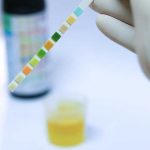Tramadol is classified as a schedule IV controlled substance by the DEA and FDA, which means it has a lower potential for abuse and addiction than some other drugs. However, because it’s an opioid, there is still a risk of overdose and addiction.
Tramadol is an opioid analgesic and central nervous system depressant that is prescribed to treat moderate to severe pain. This painkiller can be found under the brand names ConZip or Ultram and comes in immediate-release and extended-release tablets and capsules.
Tramadol works by binding to opioid receptors in the brain and altering how the central nervous system (CNS) perceives pain. Taking too much Tramadol can slow down CNS functioning and increase the risk of overdose.
How Much Tramadol Is Too Much?
How much tramadol leads to an overdose depends on several different risk factors, including:
- how you take tramadol (orally, snorting, injecting)
- how frequently you take it
- your overall health
- your body mass
The standard dose of tramadol is 100 mg once a day. A high dose is generally considered to be about 300-400 mg per day. But when you’re abusing the drug by snorting, smoking, or injecting it, it’s very difficult to know what the dosage is and an overdose can happen very quickly.
That being said, any time you take a higher dose of tramadol than your body can handle, the overdose risk increases.
Mixing tramadol with other opioids, sedatives, antidepressants, or alcohol can also increase your risk of an overdose. When mixed with other substances, even a low dosage of tramadol can lead to an overdose.
Signs & Symptoms Of A Tramadol Overdose
If you or a loved one experiences a tramadol overdose, there are quite a few signs and symptoms you’ll want to look out for, including:
- abnormal heart rate
- irregular heart rhythm
- change in blood pressure
- pupil dilation
- loss of consciousness
- nausea and vomiting
- cold, clammy skin
- hypothermia
- muscle pain
- muscle weakness
- seizures
- extreme drowsiness
- bluish tint to the skin
- coma
Other side effects of tramadol use may occur, including respiratory depression, sleepiness, shaking, and muscle tightness.
Treating A Tramadol Overdose
When someone experiences a tramadol overdose, they likely need emergency help and treatment immediately as the symptoms can be life-threatening.
Naloxone
If you are trained to administer naloxone (Narcan), it can give emergency medical professionals more time to get to you before the person suffers fatal effects. Naloxone reverses the dangerous effects of a tramadol overdose or any opioid overdose.
Medical Care
Once you get to the hospital, healthcare providers may do a number of things to help lower the toxicity in your system. If it’s been 1-2 hours since ingestion, they may administer activated charcoal to absorb any excess tramadol in your body
They may also administer naloxone or even pump the stomach. If seizures are an issue, benzodiazepines may also be given.
Detox
Once you or your loved one is stable and clear of any risks of overdose, detox is likely the next step in recovery. During this period, you are monitored for severe withdrawal symptoms while opioids completely exit your system.
Inpatient/Outpatient Addiction Treatment
After detox, inpatient or outpatient treatment is likely the next option. During this process, you participate in individual therapy and group therapy and learn more about your addiction.
For inpatient treatment, you stay at the facility 24/7 while outpatient treatment allows you to go home once treatment is over for the day.
If you or a loved one is struggling with tramadol abuse, there is help available. At Northeast Addiction Treatment Center, we offer a variety of treatment options including outpatient services, medication-assisted treatment, and behavioral therapy.
To find out more information, please call our helpline today.
Sources
- Drug Enforcement Administration (DEA) — Tramadol
- Food and Drug Administration (FDA) — Ultram
- National Library of Medicine: MedlinePlus — Tramadol
- National Library of Medicine: StatPearls — Tramadol
- Substance Abuse and Mental Health Services Administration (SAMHSA) — Emergency Department Visits For Drug Misuse Or Abuse Involving The Pain Medication Tramadol
Written by
Northeast Addition Editorial Team
©2024 Northeast Addition Center | All Rights Reserved
This page does not provide medical advice.





